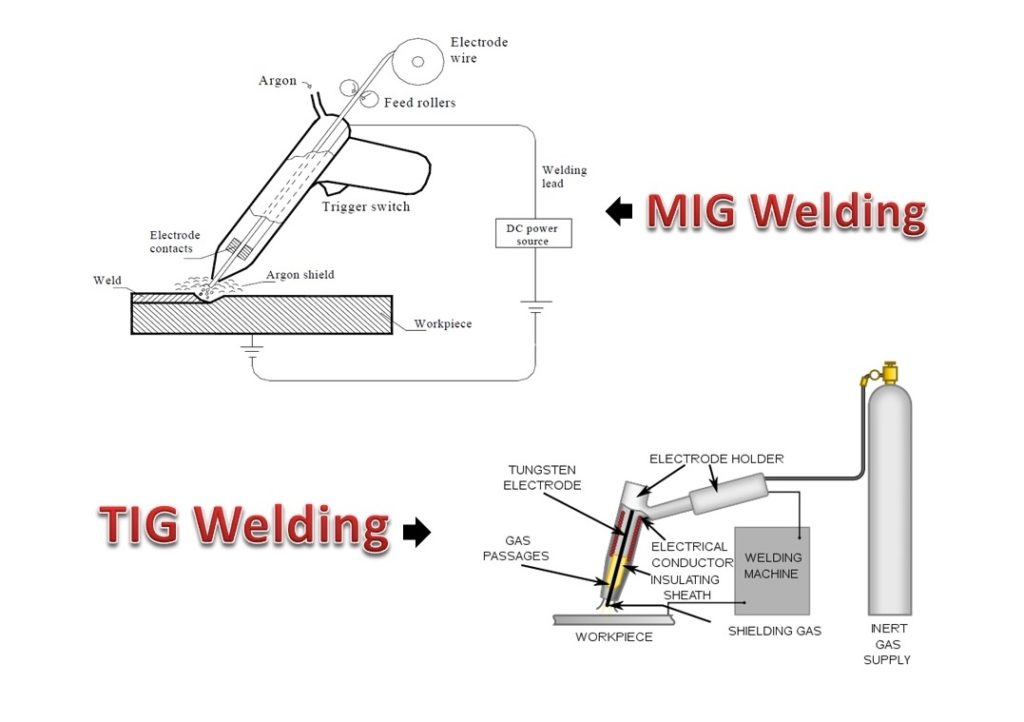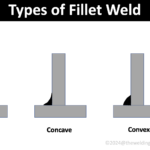
Welding plays a crucial role in industries ranging from automotive and construction to shipbuilding and aerospace. One of the most fundamental choices every welder must make is between AC (Alternating Current) and DC (Direct Current) welding. Understanding the difference between AC and DC welding can significantly impact weld quality, efficiency, and cost.
In this guide, we’ll break down the key differences, advantages, disadvantages, and applications of AC vs DC welding, helping you choose the right option for your welding needs.
What Is AC Welding?
AC welding uses alternating current, where the flow of electricity switches direction 60 times per second (in the U.S.) or 50 times per second (in many other countries). This rapid change in current helps reduce arc blow and is especially useful in certain welding conditions.
How Does AC Welding Work?
- The current changes direction periodically.
- This switching can result in a less stable arc, making AC welding more difficult to control.
- It is often used where arc blow is a concern or when welding magnetized materials.
Common AC Welding Applications:
- Shipbuilding
- Heavy equipment repair
- Welding magnetized metals
- Outdoor work where arc stability is less critical
What Is DC Welding?
DC welding uses direct current, where electricity flows in one constant direction. This results in a more stable arc, making it the preferred choice for most welding processes.
How Does DC Welding Work?
- Offers two polarity options:
- DCEP (Direct Current Electrode Positive): deeper penetration.
- DCEN (Direct Current Electrode Negative): faster deposition rate.
- DCEP (Direct Current Electrode Positive): deeper penetration.
- The steady arc provides better control, cleaner welds, and less spatter.
Common DC Welding Applications:
- Automotive welding
- Pipe and pipeline welding
- Aerospace manufacturing
- Home and hobby welding
Key Differences Between AC and DC Welding
| Feature | AC Welding | DC Welding |
| Current Flow | Alternates direction | Constant direction |
| Arc Stability | Less stable | More stable |
| Equipment Cost | Lower | Higher |
| Electrode Compatibility | Limited | Wide range |
| Welding Quality | Rougher arc | Smoother arc |
| Applications | Repair, magnetized metals | Precision work, pipelines |
Advantages of AC Welding
- Cost-Effective Equipment: AC welding machines are generally less expensive.
- Better for Magnetized Metals: Ideal for welding metals affected by magnetism.
- Useful for Shipbuilding: AC welding works well on thick materials found in ships.
- No Arc Blow: Arc blow is reduced due to alternating polarity.
Advantages of DC Welding
- Smooth and Stable Arc: Easier for beginners and results in cleaner welds.
- Less Spatter: Produces neater finishes with less post-weld cleanup.
- Better Penetration: Particularly with DCEP polarity.
- Flexible Electrode Use: Compatible with a wide variety of electrodes.
Disadvantages of AC Welding
- Arc Stability Issues: Not ideal for precise or delicate welding.
- Limited Electrodes: Fewer electrode types are suitable.
- Requires Experience: Difficult for beginners to master.
Disadvantages of DC Welding
- More Expensive Machines: DC welders generally cost more.
- Polarity Confusion: DCEP vs. DCEN may be confusing for new welders.
- Not Ideal for Magnetized Workpieces: Arc blow can occur.
AC vs DC Welding: Which One Should You Choose?
When choosing between AC and DC welding, consider the following factors:
| Criteria | Go for AC | Go for DC |
| Budget | Limited | Flexible |
| Material | Magnetized or thick | Clean or thin |
| Skill Level | Advanced | Beginner-friendly |
| Project Type | Repairs, outdoor | Automotive, fabrication |
If you’re working on general fabrication, DC welding is typically the best choice. For budget constraints or special situations like magnetized metals, AC welding becomes essential.
Top Applications of AC Welding
- Welding rusty or dirty surfaces
- Maintenance and repair welding
- Farm machinery and equipment
- Shipbuilding and marine structures
Top Applications of DC Welding
- Automotive bodywork
- Aerospace structures
- Structural steel welding
- Precision fabrication and pipe welding
Best AC/DC Welding Machines in 2025
If you’re looking for a flexible machine that handles both AC and DC welding, consider:
- Lincoln Electric AC/DC 225 – Reliable and powerful for heavy-duty use.
- Miller Thunderbolt 210 – Lightweight and versatile.
- ESAB Rebel EMP 215ic – Best for MIG, TIG, and Stick welding with AC/DC support.
Always look for features like thermal overload protection, easy polarity switch, and multi-process support when buying.
To Buy Top Welding Machines, Visit this link: Click here
Safety Tips for AC and DC Welding
- Wear protective gear: Helmet, gloves, and flame-resistant clothing.
- Check polarity settings: Especially with DC welding.
- Avoid arc blow: Use proper techniques in DC mode.
- Keep your workspace clean and ventilated.
Conclusion
Choosing between AC vs DC welding ultimately comes down to your specific welding needs, budget, and skill level. DC welding offers precision and ease, while AC welding excels in tough, magnetized, or outdoor conditions.
Frequently Asked Questions (FAQs)
Q1. Can I use the same electrodes for AC and DC welding?
Some electrodes are compatible with both, but always check the specifications. For example, E6013 can work with both.
Q2. Why is DC welding preferred for beginners?
DC welding offers a more stable arc and cleaner welds, making it easier to control.
Q3. Is AC welding stronger than DC?
Not necessarily. Strength depends on technique, material, and settings—not just current type.

